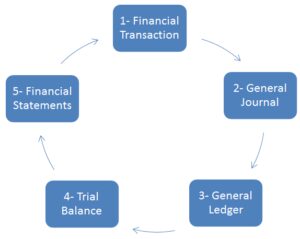Content
The amount of inventory and cost of goods on the books changes as well, depending on where the goods are and the FOB status. And of course, accepting liability for goods adds to the profits and losses, if there is damage during transit. Understanding the terminology and understanding when you’re accepting liability and ownership, is imperative. The legal https://kelleysbookkeeping.com/ ownership title of the goods transfers from the seller to the buyer when the goods are placed onto the vehicle, and that means that the seller is no longer responsible for the goods during transit. The FOB shipping point is a further condition that limits the responsibility once the item changes hands at the shipping dock at the seller’s premises.
- Upon delivery of the goods to the destination, the title for the goods transfers from the supplier to the buyer.
- If the Freight On Board is indicated as “FOB delivered,” the seller or shipper will be wholly responsible for all the costs involved in transporting the consignment.
- The ICC reviews and updates these terms once every decade; the next update is in 2030.
- FOB (free on board) shipping point is a term used in the shipping of goods and services.
- Since the seller retains ownership of the items throughout the transportation damage period, the seller should file any claims with the insurance company.
- Delivered Duty Paid (DDP) places the maximum responsibility on the seller’s side.
Sellers can record a sale when they deliver the shipment to the point of origin, where the buyer assumes the responsibility for the goods. Similarly, buyers need to record the goods in their inventory at that point. Even if the shipment takes a week or two to arrive, the inventory remains an asset in the accounts.
Who Retains Risk in FOB Shipping Point?
For an ecommerce business owner like you, it is a must to know and get full understanding of the International commercial laws, especially if your business is catering to overseas customers. FOB shipping point agreement and FOB destination are just two of the International commercial terms that every seller or buyer must be aware of. Ideally, as a business owner, you need to know the FOB shipping meaning that we discussed Fob Shipping Point Vs Fob Destination above. For buyers, understanding what is FOB point and its impact can help them determine their legal rights and responsibility if the shipment gets damaged or lost while being shipped. Usually, in Free on Board shipping, the seller is responsible for the goods and transport costs until their delivery to the shipping ports. Subsequently, the buyer takes responsibility from the port until the goods’ final destination.

FOB conditions may affect inventory, shipping, and insurance expenses, regardless of whether the transfer of products happens domestically or internationally. Despite their convoluted language largely drafted in legal speak, it is the responsibility of all parties involved in a shipment to be sure they understand all incoterms. If these terms are miscommunicated, a simple shipment may turn into a wildly expensive mishap fairly quickly. The preferred method can go either way, depending on the buyer, seller, cargo load, business plan, and freight time. It seems most beneficial for the buyer to bargain toward FOB destination, and the seller toward FOB origin. Both parties take on the crucial responsibility of maintaining tracking and visibility and ensuring a safe freight travel experience at some point from origin to destination.
Dilemma is When to Account or When to Recognize- FOB Shipment Point versus FOB Destination Point
The FOB shipping point (or the FOB origin) is an important term to understand in a contract, as it can significantly affect how much you pay for packing materials and insurance. On the other hand, the accounting rules are different when operating under FOB destination. Here, neither the buyer nor the seller can claim the difference in inventory until the goods have reached their final destination. Incoterms define the international shipping rules that delegate responsibility of buyers and sellers. For example, assume Company XYZ in the United States buys computers from a supplier in China and signs a FOB destination agreement.
The seller maintains ownership of the goods–and responsibility for replacing damaged or missing items–under the FOB destination agreement until goods arrive at their destination. For international trade, contracts establish and outline provisions–such as the FOB designation, payment terms, time and place of delivery–for shipments that are being made out of the country. The buyer is typically not the final destination, so there is more of a cautionary measure to access full control over the shipment before receiving to monitor the goods for a safe arrival at final delivery. Sellers are also able to mark their goods as sold after transferring the title to the buyer, which allows them to achieve a successful shipment and release responsibility from transport. Under the FOB shipping point, the buyer can record an increase in their inventory as soon as the products are placed on the ship.
FOB shipping point terms: Who pays for freight?
In contrast to the FOB shipping point, the seller may bear the risk of loss and responsibility for transportation expenses while the goods are in transit. The main difference between FOB and CIF lies in the transference of ownership and liability. For this reason, buyers tend to prefer CIF while online sellers should lean toward FOB shipping to access better control over their shipment, maintain a higher profit, and save the buyer money on their orders. Now assume that a seller quoted $975 FOB destination and the seller loaded the goods onto a common carrier on December 30. Also assume that the goods are on the truck until January 2, when they are unloaded at the buyer’s location. Therefore, the seller should continue to report these goods in its inventory until January 2.

The equipment manufacturer would not record a sale until delivery to the shipping point; it is at this point the manufacturer would record an entry for accounts receivable and reduce its inventory balance. When it comes to the FOB shipping point option, the seller assumes the transport costs and fees until the goods reach the port of origin. Since FOB shipping point transfers the title of the shipment of goods when the goods are placed at the shipping point, the legal title of those goods is transferred to the buyer. FOB shipping point is a further limitation or condition to FOB, as responsibility changes hands at the seller’s shipping dock.
Free on board, also referred to as freight on board, only refers to shipments made via waterways, and does not apply to any goods transported by vehicle or by air. Free on board (FOB) shipping point and free on board (FOB) destination are two of several international commercial terms (Incoterms) published by the International Chamber of Commerce (ICC). DDP also requires sellers to transport goods to the final location and pay for any relevant import customs formalities.
- FOB destination point refers to a product sold to a customer after it arrives at the buyer’s destination.
- ShipCalm is an expert in all things shipping, from shipping terms and logistics to affordable order fulfillment and management services.
- In North America, the term “FOB” is written in a sales agreement to determine when the liability and responsibility for the shipped cargo transfers from the seller to the buyer.
- Free on board, also referred to as freight on board, only refers to shipments made via waterways, and does not apply to any goods transported by vehicle or by air.
- The cargo arrives at the receiving dock and the buyer takes ownership and liability.
FOB is an international trade term created by the International Chamber of Commerce (ICC) in 1936. FOB stands for Free on Board, and it dictates where the responsibilities are split between the buyer and seller during the shipping process of international transactions. If the goods are damaged in transit, the seller should file a claim with the insurance carrier, since the seller has title to the goods during the period when the goods were damaged.
